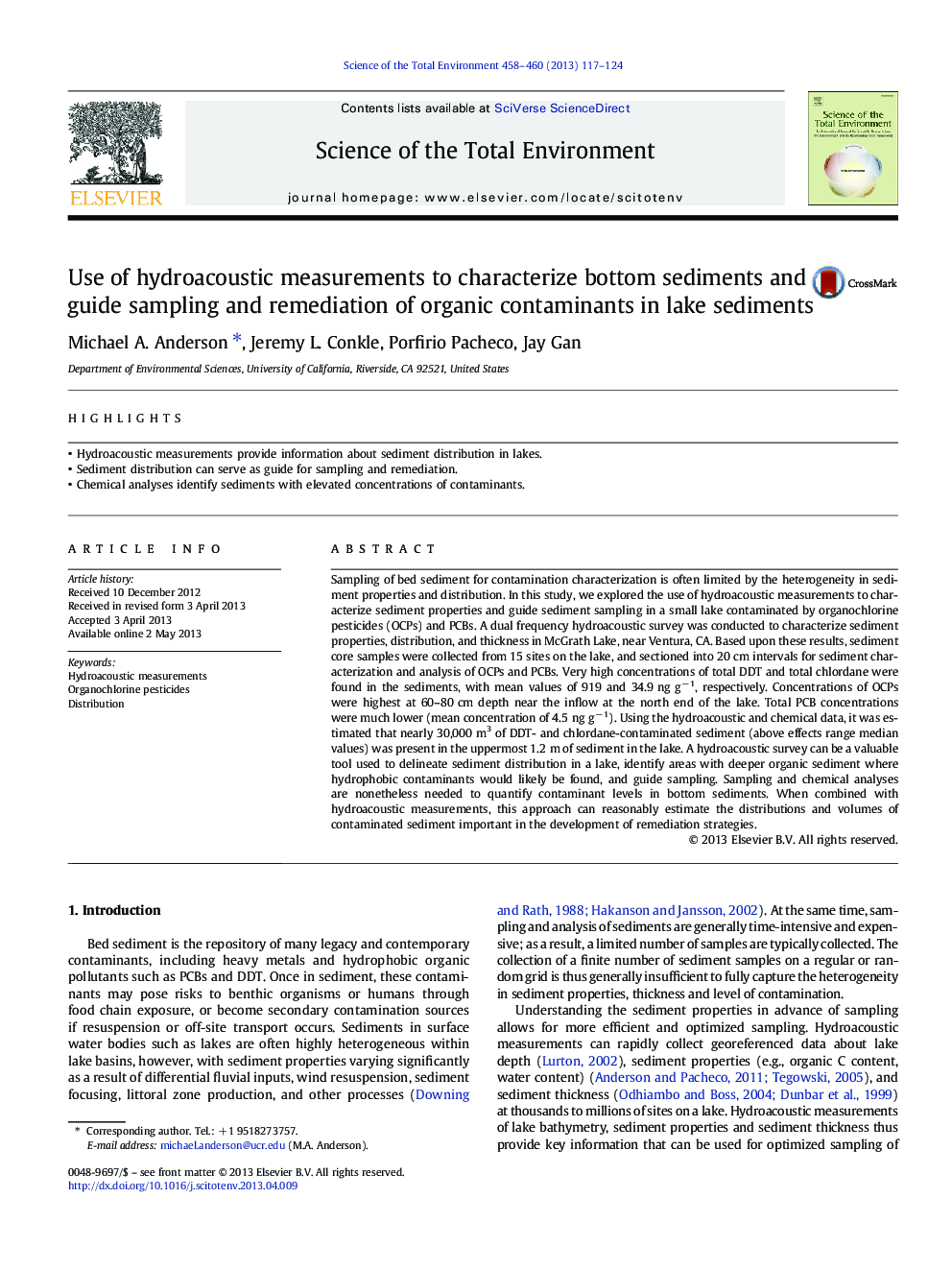| کد مقاله | کد نشریه | سال انتشار | مقاله انگلیسی | نسخه تمام متن |
|---|---|---|---|---|
| 4428613 | 1619800 | 2013 | 8 صفحه PDF | دانلود رایگان |

• Hydroacoustic measurements provide information about sediment distribution in lakes.
• Sediment distribution can serve as guide for sampling and remediation.
• Chemical analyses identify sediments with elevated concentrations of contaminants.
Sampling of bed sediment for contamination characterization is often limited by the heterogeneity in sediment properties and distribution. In this study, we explored the use of hydroacoustic measurements to characterize sediment properties and guide sediment sampling in a small lake contaminated by organochlorine pesticides (OCPs) and PCBs. A dual frequency hydroacoustic survey was conducted to characterize sediment properties, distribution, and thickness in McGrath Lake, near Ventura, CA. Based upon these results, sediment core samples were collected from 15 sites on the lake, and sectioned into 20 cm intervals for sediment characterization and analysis of OCPs and PCBs. Very high concentrations of total DDT and total chlordane were found in the sediments, with mean values of 919 and 34.9 ng g− 1, respectively. Concentrations of OCPs were highest at 60–80 cm depth near the inflow at the north end of the lake. Total PCB concentrations were much lower (mean concentration of 4.5 ng g− 1). Using the hydroacoustic and chemical data, it was estimated that nearly 30,000 m3 of DDT- and chlordane-contaminated sediment (above effects range median values) was present in the uppermost 1.2 m of sediment in the lake. A hydroacoustic survey can be a valuable tool used to delineate sediment distribution in a lake, identify areas with deeper organic sediment where hydrophobic contaminants would likely be found, and guide sampling. Sampling and chemical analyses are nonetheless needed to quantify contaminant levels in bottom sediments. When combined with hydroacoustic measurements, this approach can reasonably estimate the distributions and volumes of contaminated sediment important in the development of remediation strategies.
Journal: Science of The Total Environment - Volumes 458–460, 1 August 2013, Pages 117–124